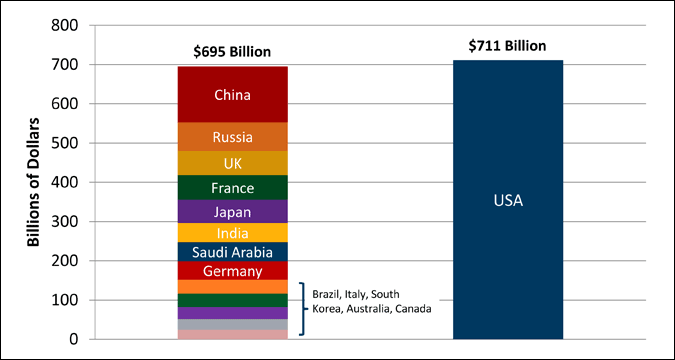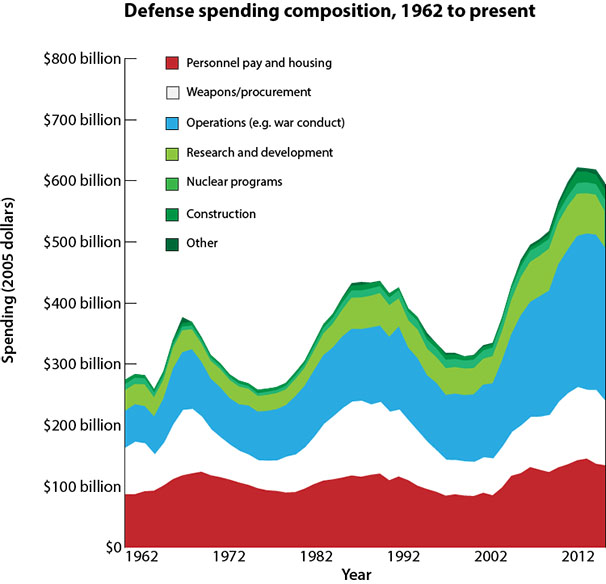Via Matthew Feeney at Reason, The Washington Post has some nice charts up about US “defense” spending.
The first illustrates the oft-quoted factoid that the US spends as much on defense as most major countries in the world combined.

It’s a powerful image that really undercuts those in Washington who perpetually inflate the threats we face abroad (and sometimes simply invent them). But note the measurement of US military spending is the more traditional amount acknowledged in federal budgets. Broader measurements which take into account all kinds of spending on the national security state put the number at about $1 trillion or above.
Putting this graphical dichotomy into context, most politicians from both parties have been screaming bloody murder (no pun intended) about the relatively minor cuts to defense included in the sequestration deal. The worst case scenario for the Pentagon budget is about $500 billion in cuts over the course of ten years. Which isn’t really a cut at all – it’s a reduction in the rate of growth in defense spending.
And that might even be putting it generously. As Feeney notes, the Mercatus Center’s Veronique de Rugy has crunched the numbers and concludes, “After sequestration, the FY 2013 defense budget will be comparable to its FY 2006 level (in real terms). Adjusted for inflation, over the next ten years, the spending is projected to remain relatively constant.”
The next graph specifies how Washington allocates its defense dollars and shows that, as Feeney writes, “engaging in war happens to be expensive. ”

The minuscule defense cuts being contemplated could easily target areas of waste. The major source of growth in annual defense budgets since 2001 has been mostly due to the wars in Iraq and Afghanistan, much of the rest has been spent on wasteful superfluous weapons technology, bloated salaries and benefits plans, and expensive peacetime operating costs for the 900-plus military bases in 130-plus countries around the world.
“But what about jobs!?” ask those unwilling to cut. Well, defense spending is not a jobs program. At least, it’s not supposed to be. As far as the health of the economy is concerned, defense budgets are a net drain.
Via the Cato Institute’s Malou Innocent, this study from the Center for International Policy finds that “Pentagon spending is an especially poor job creator” compared to “virtually any other use of the same money, from a tax cut to investments in infrastructure to spending on education.”
Warnings of doom to the economy, or to national security, are groundless scare stories coming from the groups of people who benefit most from the government’s most lucrative and deadly welfare program.




